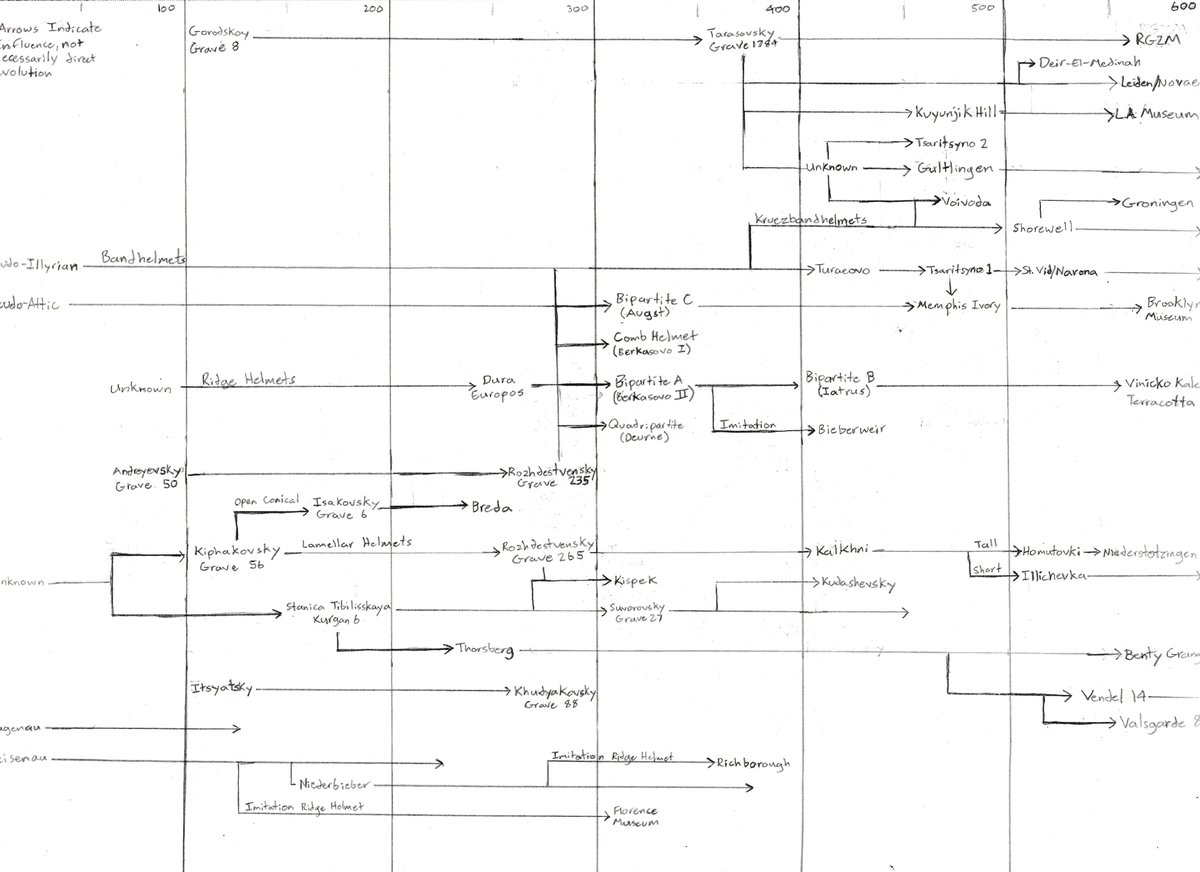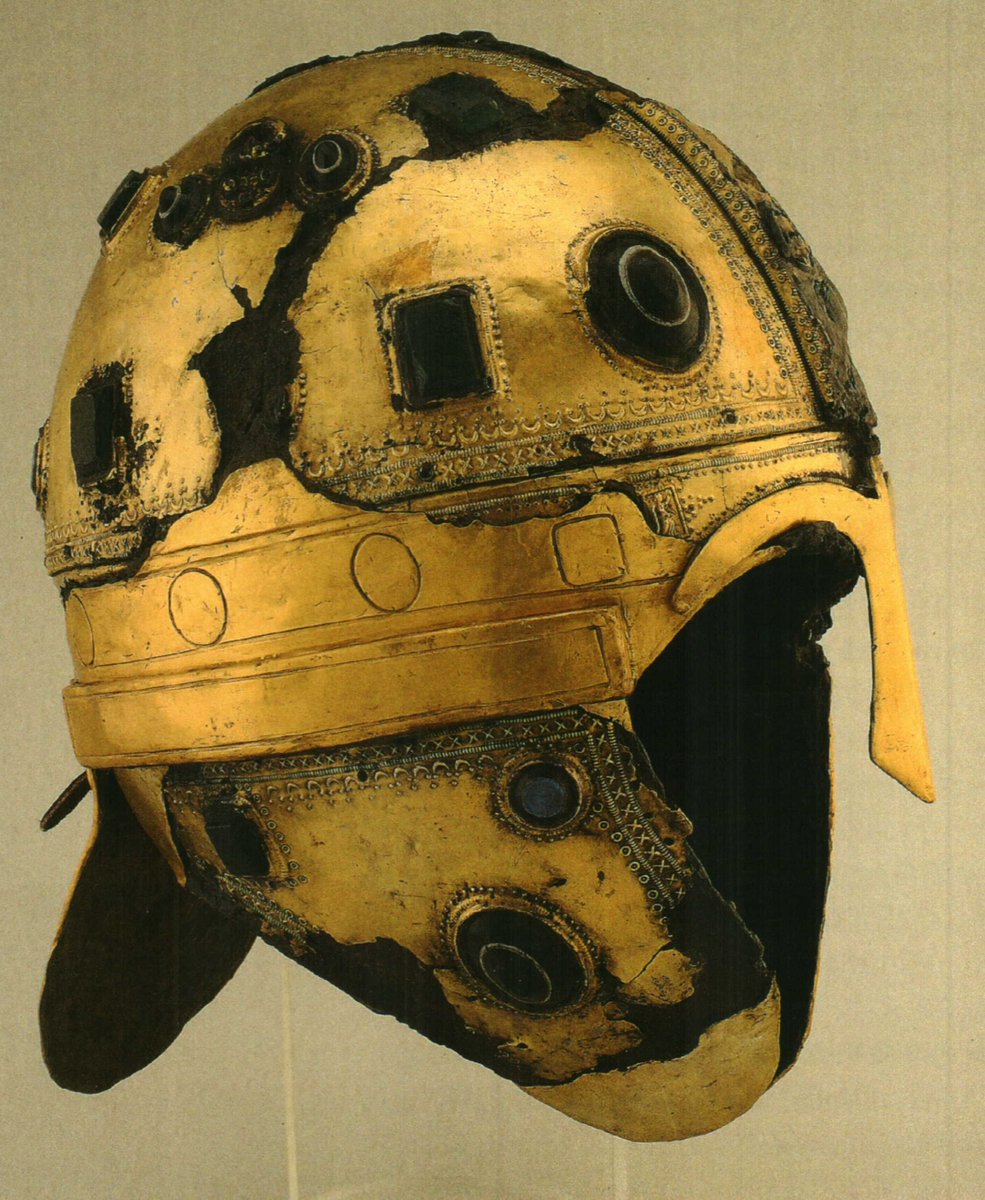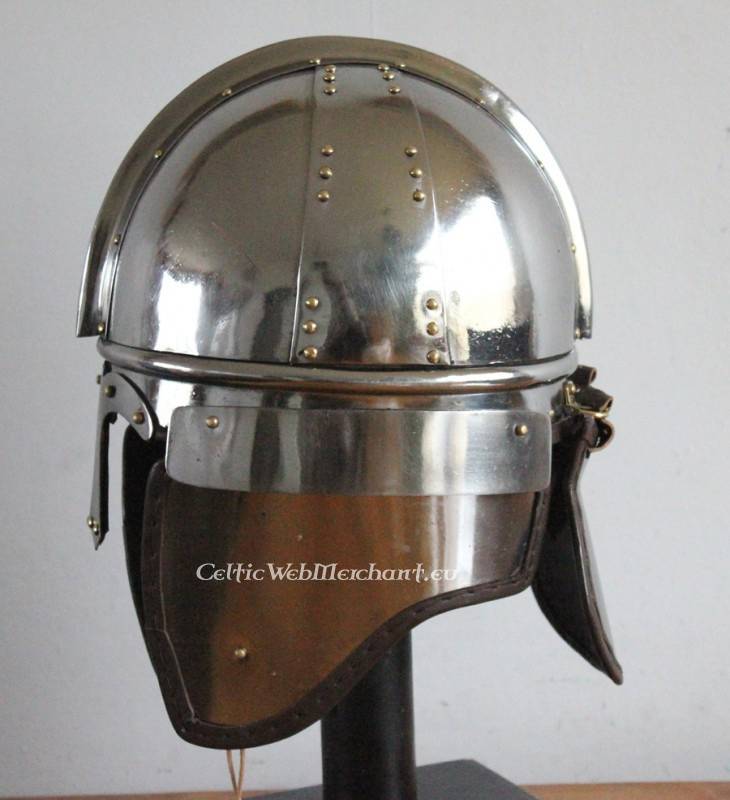
So first of all, congrats to Dr. Wijnendaele on his paper. But that's not why I'm retweeting this.
I'm retweeting this because art like this is why reenactors are important. Because things like reconstructing clothing is actually important but almost nobody pays attention to it.
I'm retweeting this because art like this is why reenactors are important. Because things like reconstructing clothing is actually important but almost nobody pays attention to it.
https://twitter.com/_Dragases_/status/1326468850095943680
And this piece is a great example of how lack of research affects pop culture depictions (e.g. Hollywood) which then in turn colors the knowledge and perceptions of artists, which then goes back and affects the ones doing historical pieces.
So let's take the deep dive: What is wrong with this image?
First for context, this is an image of the assassination of Aetius in 454 AD. the three figures are Aetius, the eunuch Heraclius, and Valentinian III.
I guess we'll work through the figures left to right.
First for context, this is an image of the assassination of Aetius in 454 AD. the three figures are Aetius, the eunuch Heraclius, and Valentinian III.
I guess we'll work through the figures left to right.
Figure 1: Aetius.
Aetius here is based on his (probable) depiction in the Monza Cathedral diptych. I have *extremely high resolution* photos of this I cannot share, sadly, but here is a lower-res one in the meantime.
Aetius here is based on his (probable) depiction in the Monza Cathedral diptych. I have *extremely high resolution* photos of this I cannot share, sadly, but here is a lower-res one in the meantime.

This diptych either is of Stilicho and dates to his consulship of 400, or of Aetius and dates to his consulship of 432. This presents some issues on its own, since these are two different archaeological periods from each other, AND almost from the image presented.
In the old system, everything past ~350ish is lumped into a period called "D" which was then separated into D1 (~350-450) and D2 (450-540).
Then Tejral said "this is stupid" and fixed that, because that was an absolutely godawful classification.
Then Tejral said "this is stupid" and fixed that, because that was an absolutely godawful classification.
Now archaeological date range in late antiquity (although some areas refuse to use his system which is annoying AF) goes C3 (~320-380), D1 (~380-420), D2 (~420-455), D3 (~455-480), E1 (~480-520), E2 (~520-550), E3 (~550-580), and G1 (~580-630).
Everything before C3 remains unchanged.
Why is this important? Well it's because something like, for example, a scabbard fitting from the C2 period (260-320) might no longer be in use in the D3 period. Or the general form might be, but stylistically it's changed significantly.
Why is this important? Well it's because something like, for example, a scabbard fitting from the C2 period (260-320) might no longer be in use in the D3 period. Or the general form might be, but stylistically it's changed significantly.

Anyways, let's get back on Aetius (wow that sounded weird).
The first thing to discuss here is the belt, which is just one glaring example of someone googling "Medieval knight bet" and using something straight out of Kingdom of Heaven (or the MuseumReplicas costume shop).
The first thing to discuss here is the belt, which is just one glaring example of someone googling "Medieval knight bet" and using something straight out of Kingdom of Heaven (or the MuseumReplicas costume shop).
So clearly the artist had no idea what a late Roman belt looked like. Something like the well-known fittings from Oudenburg would have at least been *remotely* passable (at least for late 4th-early 5th century). But this was never communicated to them.
We really don't know what kind of belt Aetius wore. The original diptych has a series of cuts along the edges of the belt which could suggest plates or stitching. We have two examples of actual leather fragments from Roman belts (Haltern and Antinoe), but far more fittings.
If the cuts are any indication, then the belt was probably as Bona proposed: a rather well known Pontic-Danubian style which is best exemplified by the one from the recent find at Volnikovka in Russia, which dates to the main phase D2 (430-455 AD). 



Belts like this are well known from within the empire during the D2 period, in fact one example might actually coincide with the 451 invasion. The fittings from Traprain law are a well known Roman example dated to early D2 (420-430), and were gifted to a Scottish warlord. 

The other errors in his dress are more nuanced. For example, the crossbow fibula bears absolutely no indication that it belongs to the Roman 5th century families, which are the Type-5/6, Type-6i, Type-6ii, and Type-7 under the Keller/Prottel classification.
Sure, some of the mid-late 4th century ones stick around until about 405-415 depending on the type, but the Type-6's pretty much phase them all out by 420. Aetius in his diptych wears a Type-6ii, such as these (Viminacium, Moray Firth, Poitou, and Tower Hamlets). 







By 454, the Type-7's were coming into use, the earliest of which is believed to be the one in the Metropolitan Museum, found in Switzerland. Unlike the Type-6's, which were still common soldiers' brooches (contrary to Swift)), the Type-7's were exclusive to high office. 

Unlike (most of) the Type-6's, these things are *massive*, but otherwise function the same way, with a screw-in pin knob that catches in a hollow catch tube, rather than a spring-based catch like the Type-1's through Type-5's. But I digress.
Now we get into the nuances of Aetius' actual clothing, because things like color actually mattered a lot. You could be *executed* for wearing the wrong color clothing in late Rome. And that is a glaring issue in this image.
Our best source for the dress of bureaucrats and officers is Lydus, writing in the 6th century, and the Codex Theodosianus which compiles late antique laws up to 438 AD (with additional Novella for later emperors). The best research on this topic remains Dawson's and Parani's.
Roman terminology for tunics can be confusing AF and I'm going to skip that here and just say read Parani's paper on the topic or Dawson's book. The tunic Aetius is supposed to wear here is what Lydus calls a "Paragaudes/Paragodes", allegedly a "Persian" import.
Today we call it a Tunica Manicata, and I have one for Aetius' station (although not quite as richly decorated as the Monza Diptych's tunic). Lydus tells us that the tunics of the Patrikioi were white and decorated with "Alethinos" - Tyrian purple - spearhead motifs. 

He also even talks of the "Perikheiridai" (which he says in latin are called "Manicae") on the tunic: the stripes near the hands. In the artwork the clavus is on the edge of the tunic sleeve's cuff, which is a rare feature. Normally the clavi are spaced back ~1-2cm from the edge.
If we go beyond this, the solid base color of Aetius' tunic has a pattern, which appears to be of crux gammata motifs (beyond that on the rectangular panels decorating the shoulders and thighs which we call Segmentae). This is one of those features that would get him executed.
The Monza diptych does, quite clearly, show a background decoration (probably in gold thread) on the base of the tunic, but it's of portraits, probably of an emperor. The Crux Gammata, while a common motif, when used across the entire tunic was for the emperor according to Lydus.
Another error with the color is on the cloak, which is a Khlamys or Sagion which according to Lydus, should be "purple (alethinos) the color of a dried vine leaf." That's actually quite a range of colors depending on the wine, but it probably implies a very deep, muted purple.
Although this image has some glaring errors, it is also probably still the best reconstruction of this tunic and cloak there is. Albeit the perikheiridai on the sleeves are still wrong (which you can only tell in a very high resolution image of the original). 

Eventually I'll have this tunic made by Dr. Marled Mader, when I have like 80K to burn one day. But until then let's continue with the rest of Aetius' appearance to finish out the night (I have to get ready for work).
Ignoring the fact that Aetius does not have a luscious mullet, there are two other errors here: the trousers, which on the original Monza diptych are decorated with an Orbiculus on the shin, and the shoes, which are shaped wrong and too high up the ankle.
In late antiquity the most common shoe was the low "Campagus", and according to the art and what little we have from the primary sources (mostly late Byzantine ones, actually), these were dyed black for most court officials. Only the emperor was allowed red shoes, called Tzanggia
Aetius probably wore something similar to these mid-4th century child's shoes from Luxembourg. Unfortunately we have almost no 5th century shoes (Camos & Antinoe are 6th century). There are only records of a find of ~40 shoes from a barracks in Arras and two soles from Aquileia. 

Can we back-date the Class V A and B shoes from Antinoe, or the Camos shoe, to the 5th century? We don't really know. Martin Moser (the shoemaker for these) thinks so, but Antinoe isn't exactly one of the best reported excavations... 





I'm going to close off tonight here, but will continue this thread over the next few days. Tomorrow I'll continue by discussing something @mikeaztec28 already mentioned - that Aetius was not wearing military, but consular, attire when meeting the emperor.
@threadreaderapp unroll
• • •
Missing some Tweet in this thread? You can try to
force a refresh










